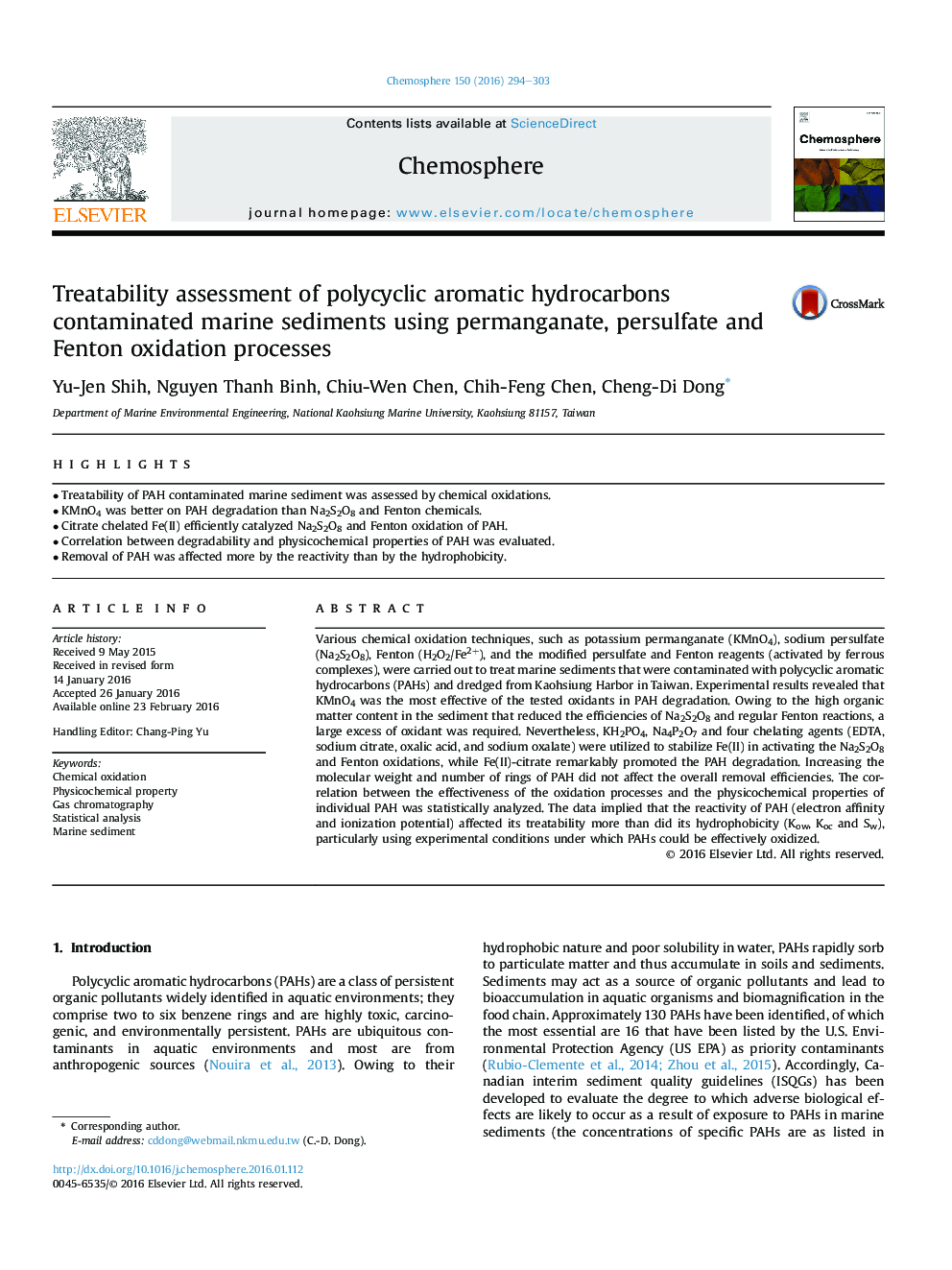| Article ID | Journal | Published Year | Pages | File Type |
|---|---|---|---|---|
| 6306837 | Chemosphere | 2016 | 10 Pages |
Abstract
Various chemical oxidation techniques, such as potassium permanganate (KMnO4), sodium persulfate (Na2S2O8), Fenton (H2O2/Fe2+), and the modified persulfate and Fenton reagents (activated by ferrous complexes), were carried out to treat marine sediments that were contaminated with polycyclic aromatic hydrocarbons (PAHs) and dredged from Kaohsiung Harbor in Taiwan. Experimental results revealed that KMnO4 was the most effective of the tested oxidants in PAH degradation. Owing to the high organic matter content in the sediment that reduced the efficiencies of Na2S2O8 and regular Fenton reactions, a large excess of oxidant was required. Nevertheless, KH2PO4, Na4P2O7 and four chelating agents (EDTA, sodium citrate, oxalic acid, and sodium oxalate) were utilized to stabilize Fe(II) in activating the Na2S2O8 and Fenton oxidations, while Fe(II)-citrate remarkably promoted the PAH degradation. Increasing the molecular weight and number of rings of PAH did not affect the overall removal efficiencies. The correlation between the effectiveness of the oxidation processes and the physicochemical properties of individual PAH was statistically analyzed. The data implied that the reactivity of PAH (electron affinity and ionization potential) affected its treatability more than did its hydrophobicity (Kow, Koc and Sw), particularly using experimental conditions under which PAHs could be effectively oxidized.
Keywords
Related Topics
Life Sciences
Environmental Science
Environmental Chemistry
Authors
Yu-Jen Shih, Nguyen Thanh Binh, Chiu-Wen Chen, Chih-Feng Chen, Cheng-Di Dong,
